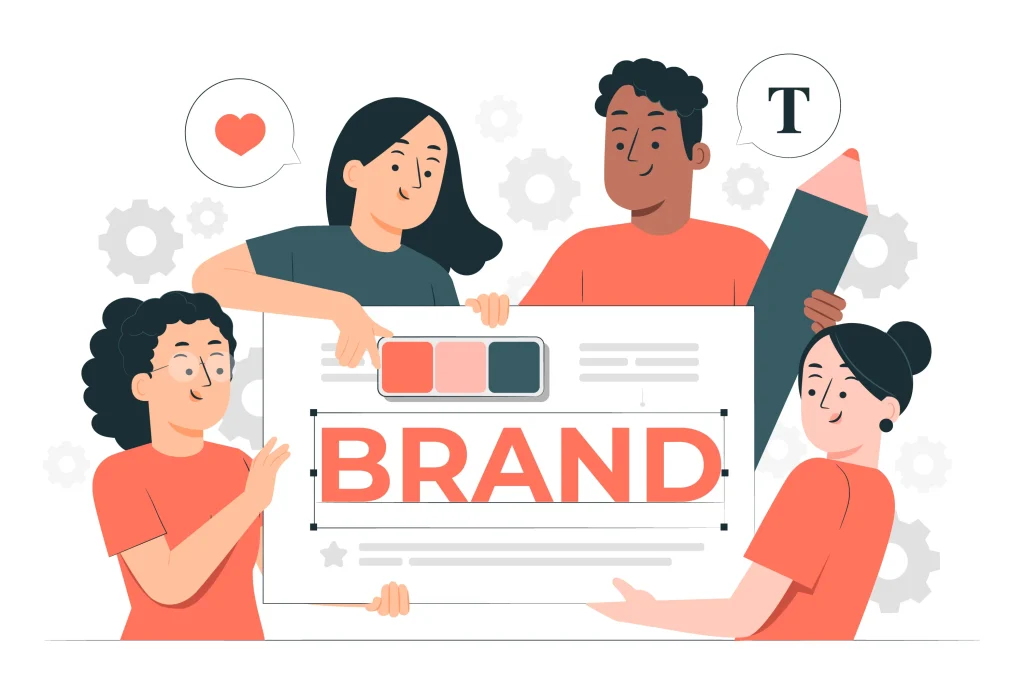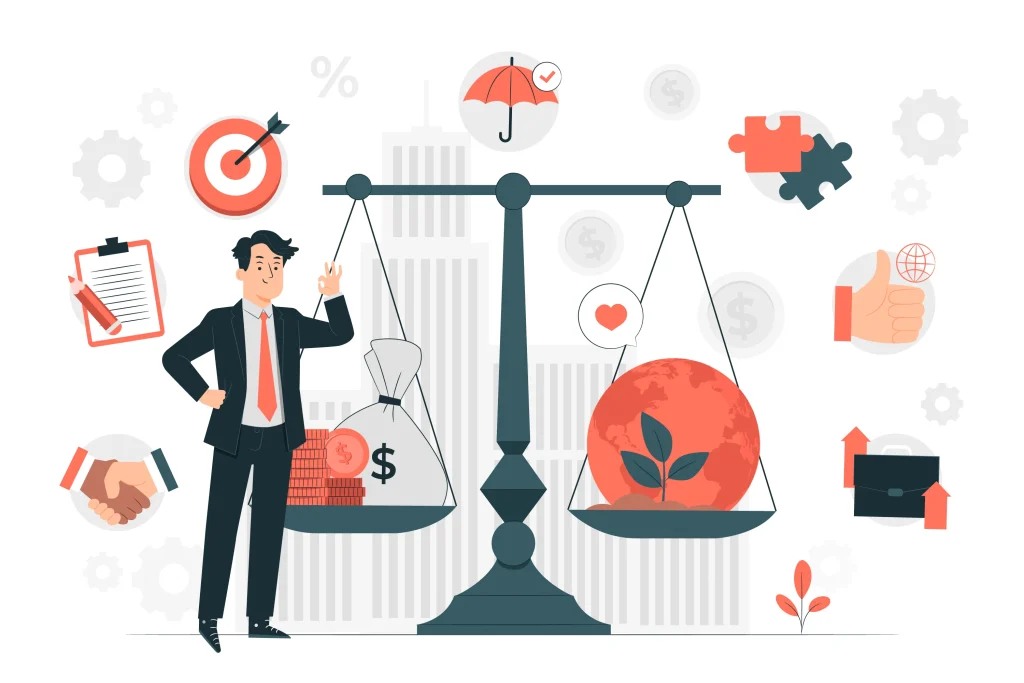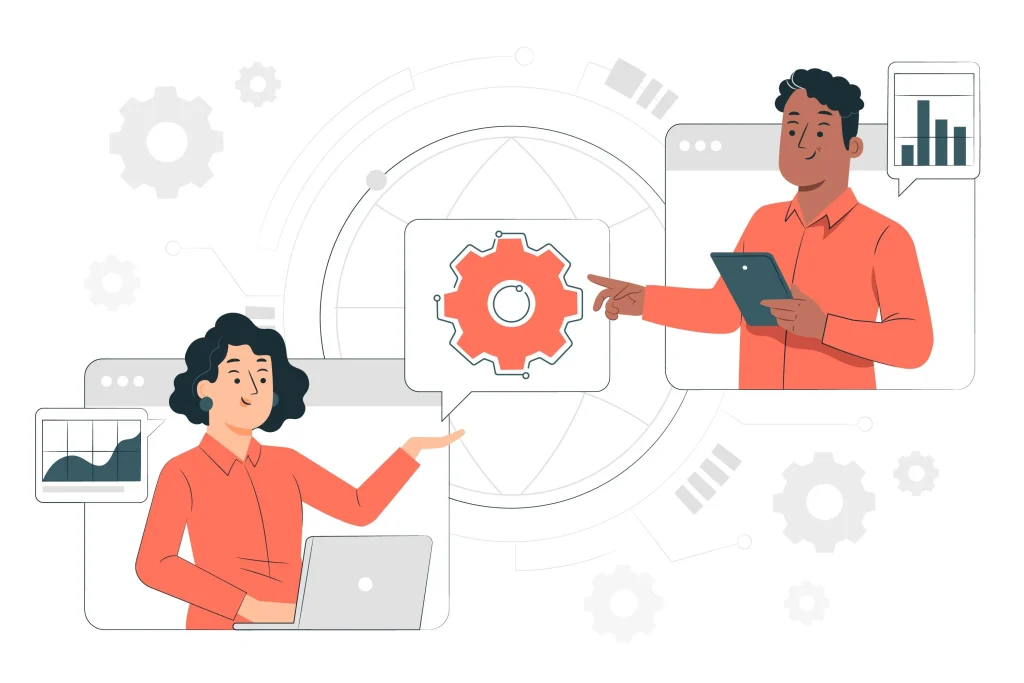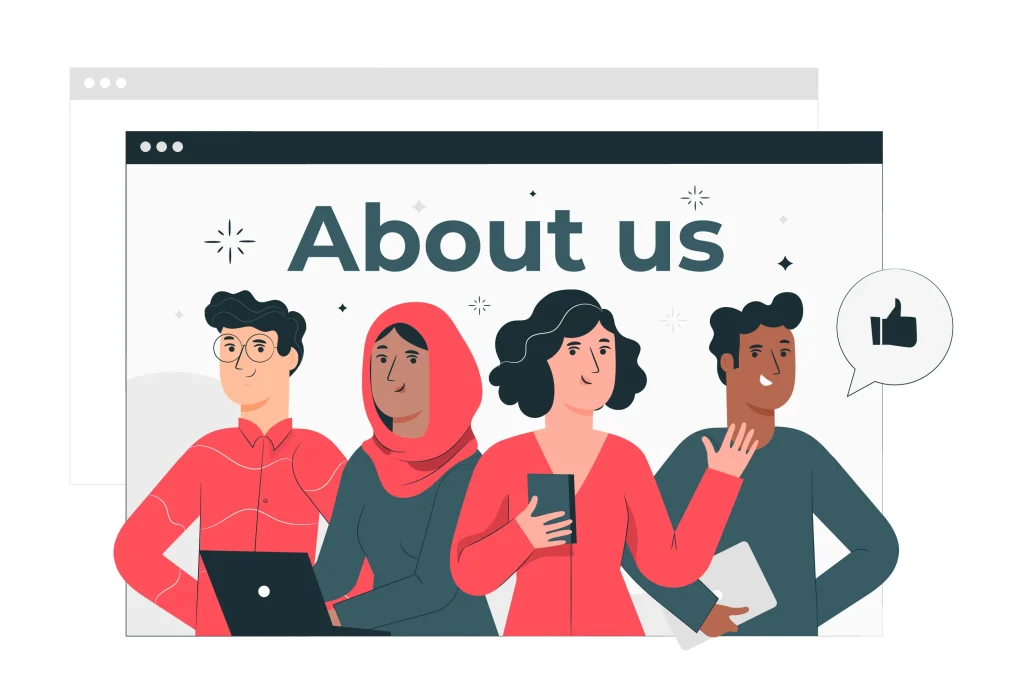
In the dynamic and competitive landscape of the contemporary workforce, the quest to attract and retain top talent has evolved into a strategic imperative for companies worldwide. Beyond offering competitive salaries, organizations are increasingly recognizing the importance of creating workplaces that go beyond the conventional, elevating themselves to the status of highly desirable employers. This transformation involves a holistic approach, addressing a range of factors that enhance the overall appeal of the workplace. From fostering a positive company culture to providing comprehensive benefits, promoting diversity, and prioritizing employee well-being, companies are redefining what it means to be an employer of choice. This article explores the key factors that distinguish companies as highly desirable employers, shedding light on the multifaceted elements that shape the modern professional landscape.
Strong Company Culture
In the contemporary job market, the significance of a strong company culture cannot be overstated. Job seekers are not merely seeking employment; they are looking for an organizational home that aligns with their values, fosters a sense of community, and promotes a positive working environment. This section explores the pivotal role of a robust company culture and its impact on making a workplace highly desirable for prospective employees.
Defining Company Culture:
Company culture encompasses the shared values, beliefs, and behaviors that define an organization’s character. It goes beyond the physical workspace and permeates interactions, decision-making processes, and the overall employee experience.
Building a Positive and Inclusive Environment:
A strong company culture begins with fostering a positive and inclusive environment.
This involves fostering a sense of belonging, encouraging open communication, and embracing diversity. Companies that prioritize these elements lay the foundation for a workplace where employees feel valued and supported.
Fostering Collaboration and Teamwork:
A cohesive and collaborative team often reflects a healthy company culture. Organizations that promote teamwork, shared goals, and mutual respect among team members create an atmosphere that encourages collective success and individual growth.
Aligning Values with Actions:
For a company culture to be truly effective, it must align its stated values with tangible actions. This alignment builds trust among employees and demonstrates the organization’s commitment to living up to its core principles.
Employee Engagement and Satisfaction:
A strong company culture contributes significantly to employee engagement and satisfaction. When employees feel a connection to the company’s mission and values, they are more likely to be motivated, productive, and committed to their roles.
Retaining Top Talent:
A positive and vibrant company culture is a powerful tool for retaining top talent. Employees who feel a strong connection to their workplace are more likely to stay loyal, reducing turnover rates and contributing to long-term organizational success.
To attract and retain top talent, companies must recognize the pivotal role of a strong company culture. Beyond perks and benefits, the intangible qualities of a workplace – the sense of belonging, shared values, and positive interactions – make an organization highly desirable. As companies work to develop a culture that attracts prospective employees, they are not merely creating a workplace but fostering a community where individuals can thrive both personally and professionally.

Opportunities for Professional Growth
In the dynamic landscape of the modern workforce, professionals seek more than just a job – they seek an environment that fosters continuous learning and provides meaningful opportunities for professional growth. This section delves into the critical importance of creating a workplace culture that values its employees’ current skills and actively invests in their development, unlocking doors to advancement and personal fulfillment.
Understanding Professional Growth:
Professional growth extends beyond climbing the corporate ladder; it encompasses ongoing skill development, learning experiences, and career advancement. Companies that prioritize providing such opportunities demonstrate a commitment to their employees’ success and satisfaction.
Investing in Training and Development:
One key way companies can facilitate professional growth is by investing in comprehensive training and development programs. These initiatives can include workshops, seminars, online courses, and mentorship opportunities, creating a continuous learning environment that empowers employees to enhance their skill sets.
Clear Career Paths and Advancement Opportunities:
Employees thrive when they clearly understand their career paths within the organization. Companies that establish transparent career paths, offer clear growth trajectories, and provide advancement opportunities based on merit attract top talent and retain dedicated, motivated employees.
Mentorship and Coaching Programs:
Establishing mentorship and coaching programs can be instrumental in fostering professional growth. Seasoned employees can share their knowledge and insights with less experienced colleagues, providing guidance and support that accelerates skill development and career progression.
Encouraging a Growth Mindset:
Fostering a growth mindset within the organization encourages employees to embrace challenges and view setbacks as opportunities for learning. Companies that celebrate innovation and creativity create an environment where individuals are motivated to push their boundaries and explore new avenues.
Recognition of Achievements:
Recognizing and celebrating employees’ achievements, whether big or small, contributes to a positive culture of appreciation. Acknowledging professional milestones reinforces the value of hard work and dedication, boosting morale and encouraging continued excellence.
Tailoring Development Plans:
Recognizing that each employee has unique strengths and areas for improvement, companies can implement individualized development plans. Tailoring learning experiences to match employees’ career aspirations and interests enhances the effectiveness of professional growth initiatives.
To attract and retain top talent, companies must not only provide competitive compensation but also prioritize opportunities for professional growth. A workplace that invests in employees’ development creates a win-win scenario – individuals grow in their careers, and the organization benefits from a skilled and motivated workforce. As the professional landscape evolves, the commitment to fostering continuous learning and advancement will be a defining factor in shaping workplaces that professionals actively seek and enthusiastically contribute to.

Work-Life Balance
In the fast-paced and demanding world of contemporary employment, the pursuit of work-life balance has become a crucial factor for job seekers. Beyond competitive salaries and career growth opportunities, individuals increasingly seek workplaces that recognize the importance of maintaining a harmonious equilibrium between professional and personal aspects of life. This section explores the significance of work-life balance and how it creates a desirable workplace environment.
Defining Work-Life Balance:
Work-life balance refers to the equilibrium between the demands of one’s professional life and personal life. Achieving this balance involves managing responsibilities at work while having the time and energy to engage in personal pursuits, family activities, and overall well-being.
Flexible Work Arrangements:
Companies that acknowledge the diverse needs of their employees often implement flexible work arrangements. This may include options for remote work, flexible hours, or compressed work weeks. Such flexibility empowers employees to tailor their work schedules to align with their commitments, reducing stress and promoting a healthier work-life balance.
Promoting Time Management and Boundaries:
Effective time management is a cornerstone of achieving work-life balance. Employers can support their staff by promoting realistic expectations, setting clear boundaries for work hours, and encouraging breaks. Establishing a culture that respects personal time fosters a sense of well-being and job satisfaction.
Wellness Programs and Benefits:
Workplace wellness programs, including mental health initiatives, fitness benefits, and stress reduction activities, contribute to a holistic approach to employee well-being. Companies that prioritize the health and wellness of their employees demonstrate a commitment to fostering a balanced and fulfilling work environment.
Encouraging Vacation and Time Off:
Encouraging employees to take their allocated vacation time and providing ample opportunities for time off is crucial in preventing burnout. Companies that recognize the importance of rest and rejuvenation contribute to a more engaged, productive, and satisfied workforce.
Technology’s Role in Facilitating Balance:
While technology can sometimes blur the lines between work and personal life, companies can leverage technology to support work-life balance. Tools that enable remote collaboration, flexible work hours, and efficient communication contribute to a more adaptable and accommodating work environment.
Employee Feedback and Flexibility:
Regularly seeking employee feedback about their workload and stress levels and being responsive to their needs demonstrates a commitment to fostering a supportive work environment. Flexibility in adapting policies based on employee feedback contributes to an evolving and responsive workplace culture.
Work-life balance is not just a buzzword but a fundamental aspect of creating a workplace that attracts and retains top talent. Companies that prioritize and actively support work-life harmony contribute to their employee’s overall well-being and job satisfaction. As the workforce continues to evolve, understanding and implementing work-life balance will remain integral to shaping workplaces that individuals actively seek and thrive within.

Competitive Compensation and Benefits
While competitive compensation has long been a key factor in attracting and retaining talent, the concept has evolved to encompass broader benefits. In the current job market, prospective employees are looking for not only a robust salary but also a comprehensive package that includes perks and benefits. This section explores the importance of competitive compensation and benefits in shaping a workplace that appeals to top talent.
Understanding Competitive Compensation:
Competitive compensation goes beyond offering a salary that matches industry standards. It involves understanding the market value of skills, experiences, and roles, and ensuring that employees are fairly compensated for their contributions. A competitive salary is the foundation upon which a desirable workplace is built.
Comprehensive Benefits Packages:
In addition to salary, employees now seek comprehensive benefits packages. This includes health insurance, dental and vision coverage, retirement plans, and additional perks such as wellness programs, childcare support, and professional development opportunities. A well-rounded benefits package demonstrates a company’s commitment to the overall well-being of its employees.
Attracting and Retaining Top Talent:
Competitive compensation and benefits are pivotal in attracting and retaining top talent. In a competitive job market, candidates often weigh the entirety of the compensation package when considering job offers. A compelling package attracts high-caliber professionals and encourages employee loyalty, reducing turnover rates.
Salary Transparency:
Transparency in salary structures fosters trust within the organization. Companies that openly communicate about how salaries are determined and clarify the factors that influence compensation contribute to a positive workplace culture.
Performance-Based Incentives:
Integrating performance-based incentives into the compensation structure motivates employees to excel. Recognition of exceptional performance through bonuses, profit-sharing, or other incentives rewards individual achievements and cultivates a culture of excellence within the organization.
Flexibility in Compensation Models:
Offering flexibility in compensation models allows companies to cater to their workforce’s diverse needs and preferences. Options may include flexible work hours, remote work opportunities, or customized benefits packages based on individual priorities.
Employee Financial Wellness Programs:
Financial wellness programs that provide resources and support for managing personal finances contribute to a more satisfied and focused workforce. Companies prioritizing financial well-being recognize the interconnectedness of employees’ personal and professional lives.
Competitive compensation and benefits are integral to creating a workplace that stands out in the competitive job market. Beyond attracting top talent, they reflect a company’s commitment to the overall welfare and satisfaction of its employees. As organizations continue to adapt to the evolving needs and expectations of the workforce, a strategic approach to compensation and benefits will remain a cornerstone in shaping workplaces that individuals actively seek and thrive within.

Innovation and Challenging Projects
In the contemporary professional landscape, job seekers are not only pursuing a stable career but are drawn to workplaces that foster innovation and offer intellectually stimulating challenges. Companies that prioritize groundbreaking projects and encourage a culture of innovation stand out as magnets for top talent. This section delves into the pivotal role of innovation and challenging projects in shaping a dynamic and desirable workplace.
Defining Innovation and Challenging Projects:
Innovation is the ability to introduce novel ideas, methodologies, and solutions that drive progress and differentiate an organization. Challenging projects, on the other hand, go beyond routine tasks, pushing employees to step out of their comfort zones, solve complex problems, and contribute to the organization’s growth.
Fostering a Culture of Innovation:
Companies that foster a culture of innovation empower employees to think creatively, experiment with new approaches, and contribute to the company’s evolution. This involves creating an environment that encourages idea generation, values experimentation and embraces a forward-thinking mindset.
Attracting Top Talent:
The promise of engaging in innovative projects and tackling challenges attracts top talent eager to make a meaningful impact. Visionary professionals seek workplaces where their skills are constantly honed, and their contributions significantly drive the organization’s success.
Intellectual Stimulation and Job Satisfaction:
Challenging projects provide intellectual stimulation, preventing employees from feeling stagnant. The opportunity to work on projects that stretch their capabilities contributes to job satisfaction and a sense of accomplishment.
Cross-Functional Collaboration:
Innovation often thrives in environments that encourage cross-functional collaboration. Companies that break down silos and promote collaboration across departments create synergies that lead to groundbreaking solutions.
Investing in Research and Development:
Organizations that invest in research and development (R&D) are committed to staying at the forefront of their industry. R&D initiatives drive innovation and position the company as a leader in its field, attracting individuals eager to contribute to pioneering advancements.
Recognition of Employee Contributions:
Acknowledging and recognizing employees’ contributions to innovative projects fosters a positive workplace culture. Recognition can come in various forms, from promotions and awards to showcasing individual and team achievements.
Continuous Learning Opportunities:
Innovation often goes hand in hand with continuous learning. Companies that provide opportunities for skill development, training programs, and exposure to cutting-edge technologies empower employees to stay at the forefront of their respective fields.
Innovation and challenging projects are not just buzzwords but essential elements in shaping a workplace that attracts top talent and nurtures a culture of continuous growth. Companies that actively seek new ideas encourage creative thinking and provide opportunities for tackling complex challenges position themselves as dynamic and desirable workplaces. As the professional landscape continues to evolve, the role of innovation in defining workplace desirability will remain a key factor in attracting and retaining ambitious and forward-thinking individuals.

Commitment to Diversity and Inclusion
In an era that values inclusivity and equality, the commitment to diversity and inclusion (D&I) has become critical in shaping workplace culture and attractiveness. Organizations that actively champion diversity not only contribute to a fair and just society but also create environments that attract top talent. This section explores the significance of a commitment to diversity and inclusion in fostering a workplace that is not only desirable but also reflective of the globalized and diverse world we live in.
Defining Diversity and Inclusion:
Diversity encompasses the variety of differences among people, including but not limited to race, ethnicity, gender, age, sexual orientation, physical abilities, and cultural backgrounds. Conversely, inclusion involves creating an environment where all individuals feel valued, respected, and empowered to contribute their unique perspectives.
Building a Diverse Workforce:
A commitment to diversity begins with intentional efforts to build a diverse workforce. Organizations that prioritize recruiting individuals from different backgrounds and experiences enrich their talent pool, fostering a culture of innovation and adaptability.
Cultivating an Inclusive Culture:
Beyond diversity numbers, the true impact of diversity is realized through cultivating an inclusive culture. Inclusive workplaces ensure that all employees feel heard, respected, and included in decision-making processes and everyday interactions regardless of their backgrounds.
Enhancing Creativity and Innovation:
Diverse teams bring a variety of perspectives and approaches to problem-solving. Companies that foster diversity and inclusion often find that the blend of ideas leads to increased creativity and innovative solutions, giving them a competitive edge in their industries.
Attracting a Broad Spectrum of Talent:
A commitment to diversity and inclusion sends a powerful message to potential employees. Job seekers actively seek workplaces that value diversity, where their unique skills and perspectives will be recognized and appreciated.
Reducing Bias and Discrimination:
Organizations committed to diversity actively work to reduce bias and discrimination within their ranks. This involves implementing policies and practices that promote fairness and equality, creating an environment where everyone can succeed.
Employee Resource Groups:
Establishing Employee Resource Groups (ERGs) that focus on specific aspects of diversity, such as ethnicity, gender, or sexual orientation, provides a platform for employees to connect, share experiences, and contribute to an inclusive workplace.
Training and Awareness Programs:
Ongoing training and awareness programs help educate employees on the importance of diversity and inclusion. These initiatives promote cultural competency, sensitivity, and understanding, fostering an environment where diversity is celebrated.
A commitment to diversity and inclusion is a moral imperative and a strategic advantage in creating a workplace that attracts, retains, and nurtures diverse talents. Organizations that champion diversity and inclusion contribute to a more equitable and just society while positioning themselves as desirable workplaces that reflect the richness of the global community. As we move forward in an interconnected world, the emphasis on diversity and inclusion will continue to be a defining factor in shaping workplaces that individuals actively seek and are proud to be a part of.

Employee Well-being Initiatives
In the changing landscape of employee expectations, companies are increasingly recognizing the importance of prioritizing employee well-being. Beyond traditional benefits, organizations are implementing comprehensive well-being initiatives to create workplaces that attract top talent and foster a culture of health and fulfillment. This section explores the significance of employee well-being initiatives in shaping a workplace that stands out as desirable and supportive.
Defining Employee Well-being:
Employee well-being encompasses physical, mental, and emotional health, as well as overall satisfaction and fulfillment in the workplace. It extends beyond medical benefits to include initiatives that contribute to a positive work environment and enhance the quality of employees’ professional and personal lives.
Mental Health Support:
Recognizing the importance of mental health, organizations are implementing initiatives that provide access to counseling services, mental health resources, and stress management programs. Creating a stigma-free environment around mental health encourages employees to seek support when needed.
Wellness Programs:
Comprehensive wellness programs encompass physical health initiatives such as fitness classes, nutritional guidance, and preventive health screenings. These programs contribute to a healthier workforce, reduce absenteeism, and enhance productivity.
Flexible Work Arrangements:
Flexibility in work arrangements, including remote work options and flexible hours, is a key well-being initiative. Providing employees with the flexibility to balance their professional and personal responsibilities promotes a healthier work-life balance.
Workplace Ergonomics and Safety:
Creating a physically safe and ergonomic workplace is crucial for employee well-being. Companies that invest in ergonomic office furniture, safety protocols, and regular health and safety training contribute to a work environment that prioritizes employees’ physical health.
Financial Wellness Support:
Financial stress can significantly impact well-being. Companies that offer financial wellness programs, such as educational resources on budgeting, retirement planning, and assistance with student loan repayments, contribute to the overall financial well-being of their employees.
Work-Life Integration:
Rather than strictly balancing work and personal life, work-life integration recognizes these aspects are intertwined. Companies that support work-life integration allow employees to blend their professional and personal responsibilities to suit their individual needs.
Family-Friendly Policies:
Supportive family-friendly policies, including parental leave, flexible schedules for parents, and childcare support, contribute to the well-being of employees with family responsibilities and demonstrate an understanding of the workforce’s diverse needs.
Employee well-being initiatives are integral to creating workplaces beyond traditional employment structures. Organizations that invest in their employees’ health, happiness, and fulfillment not only attract top talent but also foster loyalty and productivity. As the professional landscape continues prioritizing holistic well-being, companies championing employee welfare will be at the forefront of creating environments that individuals actively seek and thrive within.

Transparent Communication
In the dynamic and interconnected world of the modern workplace, transparent communication has emerged as a cornerstone for fostering trust, engagement, and a positive organizational culture. Companies that prioritize open and honest communication create an environment that attracts top talent and contributes to a cohesive and informed workforce. This section explores the significance of transparent communication in shaping a workplace that stands out as desirable and built on a foundation of trust.
Defining Transparent Communication:
Transparent communication involves the open and honest sharing of information within an organization. It goes beyond disseminating facts and figures to include clear and authentic dialogue about organizational goals, decisions, and challenges. Transparent communication is a two-way street, sharing information from leadership to employees and creating avenues for feedback and questions.
Fostering Trust and Accountability:
Transparent communication fosters trust among employees by clarifying organizational decisions and goals. When employees feel informed and involved in the decision-making process, a sense of accountability and ownership emerges, contributing to a positive workplace culture.
Openness in Leadership Communication:
Leaders who practice transparent communication set the tone for the entire organization. Transparent leaders share successes and challenges, providing context for decision-making and fostering an environment where employees feel valued and respected.
Clear Expectations and Goals:
Transparent communication ensures that employees have a clear understanding of expectations and organizational goals. When openly communicating expectations, employees are better equipped to align their efforts with overarching objectives, contributing to increased productivity and job satisfaction.
Timely and Consistent Updates:
Consistent and timely communication is key to transparency. Regular updates on company performance, changes in strategy, and other relevant information create a sense of stability and help employees stay informed, reducing uncertainty and anxiety.
Encouraging Two-Way Communication:
A culture of transparent communication encourages two-way dialogue. Companies that actively seek feedback from employees, provide channels for open discussion and address concerns create an environment where every voice is valued.
Handling Challenges with Transparency:
During challenging times or periods of change, transparent communication becomes even more crucial. Companies that openly address challenges, share plans for addressing issues, and provide support and resources create a resilient and adaptive organizational culture.
Building a Culture of Openness:
Transparent communication is not just about sharing information; it’s about building a culture of openness and accessibility. When employees feel comfortable expressing their opinions and ideas, innovation flourishes, and the organization becomes more adaptable to change.
Transparent communication is not merely a tool for disseminating information; it is the bedrock of a workplace built on trust, engagement, and a shared sense of purpose. Organizations that prioritize and actively practice transparent communication not only attract top talent but also create an environment where employees feel valued, informed, and connected to the organization’s broader goals. As the workplace landscape evolves, transparent communication will remain an essential factor in shaping workplaces that individuals actively seek and contribute to with enthusiasm.

Social Responsibility
In an era where corporate values are closely scrutinized and individuals seek workplaces that align with their convictions, social responsibility has become essential in determining workplace desirability. Companies prioritizing social responsibility go beyond profit-driven motives, actively contributing to societal well-being and environmental sustainability. This section explores the significance of social responsibility in creating workplaces that attract top talent and contribute to a positive global impact.
Defining Social Responsibility:
Social responsibility involves a company’s commitment to acting ethically and contributing positively to society. It encompasses initiatives related to environmental sustainability, community engagement, ethical business practices, and philanthropy. Socially responsible companies consider the broader impact of their actions beyond financial success.
Environmental Sustainability Initiatives:
Companies that prioritize environmental sustainability demonstrate a commitment to reducing their ecological footprint. Initiatives such as energy efficiency, waste reduction, and sustainable sourcing contribute to a positive environmental impact, resonating with employees who prioritize eco-conscious practices.
Community Engagement and Philanthropy:
Socially responsible organizations actively engage with their communities and contribute to philanthropic initiatives. This can include supporting local charities, participating in community events, or establishing corporate foundations. Such efforts create a sense of purpose among employees and contribute to a positive company image.
Ethical Business Practices:
A commitment to ethical business practices is a fundamental aspect of social responsibility. Companies that prioritize honesty, transparency, and fair treatment of employees, customers, and partners build a foundation of trust that enhances workplace desirability.
Diversity and Inclusion Initiatives:
Social responsibility extends to fostering diversity and inclusion within the workplace. Companies that actively promote diversity, ensure equal opportunities for all employees, and champion inclusive policies create environments that are both desirable and reflective of a fair and just society.
Humanitarian Efforts and Social Impact Programs:
Engaging in humanitarian efforts and social impact programs demonstrates a commitment to addressing social challenges. Whether through supporting education initiatives, healthcare programs, or social justice causes, companies that make a positive impact contribute to a sense of purpose among employees.
Transparent Reporting on Social Impact:
Transparent reporting on social impact initiatives authentically communicates the company’s commitment. Companies that openly share their social responsibility goals, progress, and challenges contribute to a culture of accountability and inspire employees to participate actively in such initiatives.
Attracting Values-Driven Talent:
Socially responsible companies naturally attract values-driven talent. Individuals seeking workplaces that align with their values are drawn to organizations that actively contribute to societal well-being and environmental sustainability.
Social responsibility is no longer just a buzzword but a defining characteristic of workplaces that go beyond profits and actively contribute to a better world. Companies that prioritize social responsibility attract top talent and create environments where employees feel a sense of purpose and pride. As individuals increasingly seek workplaces that align with their values, the role of social responsibility in shaping workplace desirability will continue to be a key factor in the evolving professional landscape.

Flexible Work Arrangements
As the nature of work evolves and individuals seek greater work-life balance, flexible work arrangements have emerged as a pivotal factor in shaping the desirability of workplaces. Companies that recognize and accommodate diverse work preferences contribute to a positive and adaptive work culture. This section explores the significance of flexible work arrangements in attracting top talent and fostering an environment that resonates with the needs of the modern workforce.
Defining Flexible Work Arrangements:
Flexible work arrangements encompass a variety of practices that deviate from traditional, fixed working hours and locations. This may include remote work, flexible scheduling, compressed workweeks, and job-sharing. The aim is to give employees more autonomy and the ability to tailor their work environment to suit their needs.
Remote Work Opportunities:
Remote work has become a prominent aspect of flexible arrangements, allowing employees to work from locations outside the traditional office. This provides a sense of freedom, accommodates diverse lifestyle preferences, and reduces the constraints of geographical location for talent acquisition.
Flexible Scheduling:
Flexible scheduling allows employees to adjust their work hours to align with their personal lives. This may include variations in start and end times, part-time schedules, or the option to compress the workweek. Such flexibility acknowledges the varied needs and priorities of individual employees.
Compressed Workweeks:
Compressed workweeks involve completing the standard work hours in fewer days. For example, a four-day workweek with longer daily hours. This arrangement allows employees to enjoy extended weekends, contributing to improved work-life balance and job satisfaction.
Job Sharing:
Job sharing involves two or more employees sharing the responsibilities of a single full-time position. This arrangement accommodates individuals seeking part-time employment while ensuring continuity and efficiency in job responsibilities.
Balancing Work and Personal Life:
Flexible work arrangements contribute to a healthier balance between work and personal life. Companies prioritizing this balance acknowledge the importance of employee well-being and create environments where individuals can thrive professionally and personally.
Technology’s Role in Facilitating Flexibility:
Advancements in technology play a crucial role in facilitating flexible work arrangements. Cloud-based collaboration tools, video conferencing, and project management platforms enable seamless communication and collaboration irrespective of physical location.
Enhancing Employee Productivity and Engagement:
Contrary to conventional beliefs, flexible work arrangements have been shown to enhance employee productivity and engagement. Providing autonomy in work arrangements allows individuals to structure their work in a way that suits their peak productivity times and personal preferences.
Flexible work arrangements have become a linchpin in the contemporary workplace, reflecting a shift toward recognizing and accommodating the workforce’s diverse needs. Companies that embrace flexibility attract top talent and contribute to a culture of trust, autonomy, and adaptability. As the professional landscape continues to evolve, the role of flexible work arrangements in shaping workplace desirability will remain a critical factor in creating environments where individuals can achieve both professional success and personal fulfillment.

Recognition and Rewards
In the competitive landscape of modern workplaces, attracting and retaining top talent requires more than just competitive salaries and benefits. Recognition and rewards have emerged as essential components in creating an environment where employees feel valued and motivated. This section explores the significance of recognition and rewards in shaping workplace desirability and fostering a culture of appreciation.
Defining Recognition and Rewards:
Recognition involves acknowledging and appreciating employees’ contributions, achievements, and dedication. Conversely, rewards go beyond verbal praise to include tangible incentives such as bonuses, promotions, or non-monetary perks. Together, recognition and rewards create a dynamic system that motivates and reinforces positive behaviors within the workforce.
Fostering a Culture of Appreciation:
Recognition and rewards play a crucial role in fostering a culture of appreciation within an organization. When employees feel acknowledged for their efforts, they are more likely to be engaged, motivated, and invested in the company’s success.
Verbal Recognition and Appreciation:
Simple gestures such as verbal appreciation, public acknowledgment, or personalized thank-you messages can profoundly impact employee morale. Recognizing individual and team accomplishments creates a positive atmosphere and encourages a sense of pride among employees.
Tangible Rewards and Incentives:
Whether monetary or non-monetary, tangible rewards provide concrete recognition for outstanding performance. This can include bonuses, promotions, extra time off, or other perks demonstrating the organization’s commitment to rewarding excellence.
Employee of the Month/Quarter Programs:
Implementing Employee of the Month or Employee of the Quarter programs allows organizations to highlight and celebrate outstanding contributions. These programs recognize individual achievements and set positive examples for others to follow.
Peer Recognition Programs:
Peer recognition programs empower employees to acknowledge and appreciate the efforts of their colleagues. This fosters a sense of camaraderie and teamwork, contributing to a positive and collaborative workplace culture.
Professional Development Opportunities:
Investing in employees’ professional development is a form of recognition that goes beyond immediate rewards. Providing opportunities for skill development, training programs, and mentorship reinforces the organization’s commitment to its employees’ long-term growth and success.
Celebrating Milestones and Achievements:
Recognizing significant milestones, whether personal or professional, contributes to a culture of celebration. Whether it’s work anniversaries, project completions, or personal accomplishments, acknowledging these moments strengthens the bond between employees and the organization.
Employee Feedback and Recognition:
Incorporating employee feedback into the recognition process ensures that the acknowledgment aligns with individual preferences. Understanding how employees prefer to be recognized allows organizations to tailor their approaches and make the recognition more meaningful.
Recognition and rewards are not merely HR practices; they are essential in shaping a workplace where employees feel valued, motivated, and invested in the company’s success. Organizations that prioritize and actively implement recognition and rewards programs attract top talent and create environments where individuals are inspired to go above and beyond. As the professional landscape continues to evolve, recognition and rewards in shaping workplace desirability will remain a key factor in creating cultures of appreciation and excellence.

Digital Transformation
In the rapidly evolving landscape of the modern workplace, technological advancements and digital transformation have become defining factors in attracting top talent. Companies that prioritize a tech-savvy culture stay competitive and create environments that resonate with the expectations of the contemporary workforce. This section explores the significance of being tech-savvy and embracing digital transformation in shaping workplace desirability.
Defining Tech Savvy and Digital Transformation:
Being tech-savvy involves having a deep understanding and proficiency in utilizing various technologies and digital tools. Digital transformation, on the other hand, refers to integrating digital technologies to change how businesses operate and fundamentally deliver value to customers. These concepts represent a commitment to staying abreast of technological advancements and leveraging them to drive innovation.
Adaptability to Technological Trends:
A tech-savvy workplace embraces change and adapts to evolving technological trends. Companies prioritizing continuous learning and providing resources for employees to stay updated on the latest technologies demonstrate a commitment to remaining at the forefront of their industry.
Efficiency and Productivity Gains:
Digital transformation initiatives often result in increased efficiency and productivity. Automation, artificial intelligence, and streamlined digital processes contribute to a more agile and responsive workplace, where tasks are performed more efficiently, allowing employees to focus on high-value activities.
Remote Collaboration and Connectivity:
Leveraging technology for remote collaboration and connectivity has become crucial, especially in a globalized and interconnected business environment. Tech-savvy organizations utilize digital collaboration tools, video conferencing, and project management platforms to facilitate seamless communication and collaboration among remote teams.
Innovation and Creative Problem-Solving:
Being tech-savvy fosters a culture of innovation and creative problem-solving. Companies that encourage employees to explore and experiment with new technologies create an environment where novel ideas are welcomed, and digital solutions are continuously explored to address business challenges.
Data-Driven Decision-Making:
Digital transformation often involves leveraging data analytics for informed decision-making. Companies prioritizing data-driven approaches empower employees to make decisions based on real-time insights, contributing to a more strategic and informed organizational culture.
Embracing New Technologies:
Tech-savvy workplaces actively embrace and integrate new technologies into their operations. Whether adopting cloud computing, implementing cybersecurity measures, or exploring emerging technologies like blockchain and augmented reality, being open to technological advancements positions a company as forward-thinking and adaptable.
Investment in Employee Training:
Digital literacy is a valuable skill in the modern workplace. Companies that invest in training programs to enhance the digital skills of their employees not only empower their workforce but also create an atmosphere of continuous learning and growth.
In an era where digitalization is synonymous with progress, tech-savvy and digital transformation are not just buzzwords but critical components of workplace desirability. Organizations that prioritize these aspects not only attract tech talent but also foster cultures of innovation, efficiency, and adaptability. As technological advancements continue to shape the professional landscape, the role of tech-savvy practices and digital transformation will remain pivotal in creating workplaces where individuals thrive in the face of evolving challenges and opportunities.

Clear Mission and Values
In pursuing meaningful and fulfilling work, employees are increasingly seeking workplaces that align with their values and are driven by a clear sense of purpose. Companies with well-defined missions and values attract top talent and foster a cohesive and inspired organizational culture. This section explores the significance of clear mission and values in shaping workplace desirability.
Defining Mission and Values:
A company’s mission is its overarching purpose, defining why it exists and the impact it seeks to make. Conversely, values represent the core principles and beliefs that guide decision-making and behavior within the organization. Together, they are the foundation for the company’s identity and culture.
Creating a Unified Vision:
A clear mission provides employees with a sense of direction and purpose. It answers the fundamental question of the company’s existence and its aspirations. When employees understand and connect with this overarching vision, it fosters a sense of unity and collective effort toward a common goal.
Guiding Principles for Decision-Making:
Values act as guiding principles that shape the company’s culture and influence decision-making at all levels. When organizations adhere to a set of shared values, it creates a consistent and ethical framework for navigating challenges, making choices, and interacting with stakeholders.
Inspiring Employee Engagement:
A clear mission and values inspire employee engagement by providing a sense of meaning and belonging. When individuals feel that their work contributes to a larger purpose aligned with their values, they are more likely to be motivated, committed, and enthusiastic about their contributions.
Attracting Like-Minded Talent:
Organizations with well-defined missions and values naturally attract individuals who share similar beliefs and aspirations. This alignment between personal and organizational values is a powerful magnet for top talent-seeking workplaces where they can make a meaningful impact and contribute to a larger purpose.
Defining Company Identity:
Mission and values contribute to defining a company’s unique identity. They go beyond products or services, forming the essence of what the organization stands for. This identity, when communicated effectively, resonates with both employees and customers, creating a distinctive brand that goes beyond the bottom line.
Cultivating a Positive Workplace Culture:
A clear mission and values contribute to cultivating a positive workplace culture. When shared values are upheld, it fosters trust, transparency, and collaboration. This, in turn, creates an environment where individuals feel supported, valued, and aligned with the company’s larger vision.
Adapting to Change with Purpose:
A clear mission provides a steady anchor in times of change or uncertainty. Organizations guided by a well-defined purpose can adapt to external shifts while staying true to their core values, providing stability and direction during periods of transition.
A clear mission and values are not merely symbolic but fundamental drivers of workplace desirability. Companies that articulate a compelling mission and uphold values create environments where individuals find purpose, inspiration, and a sense of belonging. As the professional landscape continues to evolve, the role of a clear mission and values in shaping workplaces that individuals actively seek and contribute to will remain integral to the success and sustainability of organizations.

Continuous Learning and Development
In a rapidly changing and competitive professional landscape, the commitment to continuous learning and development has become a key differentiator for both organizations and individuals. Companies that prioritize ongoing education attract top talent and foster a culture of innovation, adaptability, and professional growth. This section explores the significance of continuous learning and development in shaping workplace desirability.
Defining Continuous Learning and Development:
Continuous learning and development refer to the ongoing process of acquiring new knowledge, skills, and competencies throughout one’s career. It involves both formal education and informal learning opportunities, fostering personal and professional growth.
Fostering a Culture of Adaptability:
Organizations that prioritize continuous learning create environments where adaptability is ingrained in the culture. In the face of technological advancements, market shifts, and evolving industry trends, employees committed to ongoing learning are better positioned to navigate change confidently.
Professional Skill Enhancement:
Continuous learning ensures employees stay abreast of the latest advancements in their fields. Whether through workshops, online courses, or on-the-job training, companies that invest in skill enhancement contribute to a workforce that is current and capable of driving innovation.
Encouraging Intrapreneurship:
In a learning-centric environment, employees are encouraged to think like entrepreneurs within the organization, fostering a culture of intrapreneurship. Continuous learning nurtures creativity, problem-solving, and the willingness to explore new ideas and initiatives.
Strengthening Employee Engagement:
Providing opportunities for continuous learning is a powerful engagement tool. Employees who feel that their professional development is a priority for the company are more likely to be engaged, committed, and invested in the organization’s success.
Tailored Learning Paths:
Companies that offer personalized and tailored learning paths acknowledge their workforce’s diverse needs and aspirations. Whether through mentorship programs, individualized training plans, or access to various learning resources, personalized learning experiences contribute to a more satisfied and motivated workforce.
Leadership Development Programs:
Continuous learning is essential for leadership development. Companies that invest in leadership training programs contribute to the growth of future leaders within the organization, ensuring a pipeline of skilled individuals ready to take on higher responsibilities.
Adaptive Learning Technologies:
Integrating adaptive learning technologies, such as online courses, virtual reality simulations, and AI-driven learning platforms, enhances the accessibility and effectiveness of continuous learning initiatives. These technologies provide flexible and interactive learning experiences that cater to diverse learning styles.
Building a Learning Culture:
Continuous learning is not just an individual endeavor; it’s about building a learning culture within the organization. Companies that actively promote knowledge-sharing, mentorship, and collaborative learning create environments where the collective wisdom of the workforce contributes to the organization’s overall growth.
Continuous learning and development are not optional luxuries but essential components of workplace desirability. Organizations that prioritize ongoing education attract individuals who value personal and professional growth and create adaptive, innovative, and resilient workplaces. As the professional landscape continues to evolve, the role of continuous learning in shaping workplaces that individuals actively seek and contribute to will remain integral to the success and sustainability of organizations.

Transparent Career Paths
In the contemporary professional landscape, employees seek more than just a job; they seek a clear career growth and advancement trajectory. Transparent career paths have emerged as a crucial factor in shaping workplace desirability. Companies that provide clarity on advancement opportunities not only attract top talent but also foster a sense of purpose and commitment among their workforce. This section explores the significance of transparent career paths in shaping workplace desirability.
Defining Transparent Career Paths:
Transparent career paths involve providing employees with clear and accessible information about the potential progression of their careers within the organization. This includes outlining the steps, skills, and milestones required for advancement, and offering a roadmap that empowers employees to navigate their professional growth.
Clarifying Advancement Opportunities:
A key aspect of transparent career paths is clarity regarding advancement opportunities within the organization. Companies that communicate the various career stages, potential roles, and the skills required for each level empower employees to set clear goals and actively pursue advancement.
Aligning Individual Goals with Organizational Needs:
Transparent career paths facilitate alignment between an individual’s career aspirations and the organization’s strategic goals. When employees understand how their growth contributes to the overall success of the company, they are more likely to feel motivated, engaged, and committed to long-term success.
Encouraging Skill Development:
Transparent career paths often include guidance on the skills and competencies needed for career progression. This not only encourages employees to focus on skill development but also provides a roadmap for training and educational opportunities that can support their professional growth.
Facilitating Career Conversations:
Transparent career paths promote open and constructive career conversations between employees and managers. Regular discussions about career goals, progress, and development need to create a culture where individuals feel supported in their growth journey.
Mitigating Uncertainty and Ambiguity:
A lack of transparency about career paths can lead to uncertainty and ambiguity, causing frustration and disengagement among employees. Transparent career paths provide a clear framework that reduces ambiguity, instills confidence, and allows individuals to make informed decisions about their careers.
Recognizing and Rewarding Progress:
Companies with transparent career paths often implement recognition and reward systems tied to career progression. Acknowledging and rewarding employees for reaching milestones and achieving career goals not only reinforces their efforts but also contributes to a positive workplace culture.
Tailoring Development Plans:
Transparent career paths allow organizations to tailor individualized development plans for employees. Recognizing that career paths are not one-size-fits-all, companies can work with individuals to create personalized plans that align with their aspirations and the organization’s needs.
Attracting and Retaining Talent:
Transparent career paths are attractive to potential hires seeking organizations that invest in their employees’ long-term success. Additionally, they contribute to employee retention by demonstrating a commitment to supporting and nurturing the growth of existing talent.
Transparent career paths are not just a tool for employee development but a fundamental element of workplace desirability. Organizations that invest in providing clear career trajectories create environments where individuals feel empowered, motivated, and confident in their professional journeys. As the professional landscape continues to evolve, the role of transparent career paths in shaping workplaces that individuals actively seek and contribute to will remain integral to the success and sustainability of organizations.

Employee Involvement and Input
In the collaborative and inclusive work environment era, employee involvement and input have become pivotal elements in shaping workplace desirability. Companies that actively engage their workforce to seek input and value diverse perspectives not only attract top talent but also foster a culture of innovation, satisfaction, and collective success. This section explores the significance of employee involvement and input in creating workplaces that individuals actively seek and contribute to.
Defining Employee Involvement and Input:
Employee involvement encompasses employees’ active participation and engagement in decision-making processes, problem-solving, and organizational planning. On the other hand, employee input refers to soliciting and considering employees’ ideas, opinions, and feedback in various aspects of the business.
Fostering a Culture of Inclusivity:
Employee involvement and input contribute to the cultivation of a culture where every individual’s voice is valued. This inclusivity goes beyond traditional hierarchical structures, encouraging open dialogue and creating an environment where employees feel heard, respected, and actively engaged in the organization’s development.
Idea Generation and Innovation:
Actively involving employees in decision-making processes and seeking their input fosters a culture of innovation. Employees, being closest to their work and daily tasks, often bring valuable insights and creative solutions to challenges, contributing to the organization’s adaptability and competitiveness.
Strengthening Employee Engagement:
Employee involvement and input are potent drivers of engagement. When employees feel that their opinions matter and their contributions are valued, they are more likely to be emotionally invested in their work, leading to increased job satisfaction, commitment, and overall well-being.
Participatory Decision-Making:
Encouraging employee involvement in decision-making processes, especially those that affect their work, enhances the quality of decisions. This participatory approach not only leverages the collective intelligence of the workforce but also creates a sense of ownership and accountability among employees.
Feedback and Continuous Improvement:
Seeking employee input is essential for fostering a culture of continuous improvement. Employees are a valuable source of feedback on processes, products, and workplace dynamics. Actively incorporating their insights allows organizations to adapt and evolve in response to changing needs.
Enhancing Communication Channels:
Employee involvement and input require effective communication channels. Companies that establish open lines of communication provide platforms for feedback, and actively listen to employee suggestions create an environment where information flows freely, contributing to transparency and trust.
Recognizing Diverse Perspectives:
Valuing employee input means recognizing and appreciating the diversity of perspectives within the workforce. This diversity contributes to more well-rounded decision-making, innovative problem-solving, and a workplace culture that embraces different viewpoints.
Empowering Employee Growth:
Involving employees in decision-making processes and seeking their input provides opportunities for skill development and personal growth. Empowering individuals to contribute to strategic discussions and business decisions not only enhances their professional capabilities but also fosters a sense of confidence and competence.
Employee involvement and input are not just mechanisms for gathering ideas but fundamental elements of workplace desirability. Organizations that actively engage their workforce, encourage open communication, and value diverse perspectives create environments where individuals feel empowered, motivated, and integral to their success. As the professional landscape continues to evolve, the role of employee involvement and input in shaping workplaces that individuals actively seek and contribute to will remain crucial for organizational success and sustainability.

Comprehensive Onboarding Programs
The onboarding process is a pivotal phase in an employee’s journey, setting the tone for their experience within a new organization. Comprehensive onboarding programs have become integral to shaping workplace desirability. Companies that invest in well-structured and welcoming onboarding experiences not only ease the transition for new hires but also contribute to employee satisfaction, engagement, and long-term success. This section explores the significance of comprehensive onboarding programs in creating workplaces that individuals actively seek and thrive in.
Defining Comprehensive Onboarding Programs:
Comprehensive onboarding programs go beyond administrative tasks and paperwork; they encompass a strategic and holistic approach to integrating new hires into the organizational culture. These programs include orientation, training, mentorship, and a focus on fostering a sense of belonging and purpose from day one.
Setting the Tone for Positive Experiences:
The initial days and weeks at a new job are crucial for shaping an employee’s perception of the organization. Comprehensive onboarding programs set the tone for positive experiences by providing a structured introduction to the company’s values, culture, and expectations.
Facilitating Early Connection and Integration:
Comprehensive onboarding programs facilitate early connections between new hires, their colleagues, and the broader organizational structure. Activities such as team-building exercises, introductions to key stakeholders, and interactive orientation sessions foster a sense of belonging and integration.
Clarifying Roles and Expectations:
New employees often experience uncertainty about their roles and expectations. Comprehensive onboarding programs address this by providing clarity on job responsibilities, performance expectations, and how individual contributions align with the organization’s goals, reducing ambiguity and fostering confidence.
Structured Training and Skill Development:
Beyond basic orientation, comprehensive onboarding includes structured training programs tailored to the needs of the role. This ensures that new hires receive the necessary skills and knowledge to perform their job effectively, contributing to their professional growth and success.
Mentorship and Support Systems:
Comprehensive onboarding often incorporates mentorship programs or buddy systems, pairing new hires with experienced employees who can provide guidance, answer questions, and offer support. This mentorship fosters a sense of camaraderie and accelerates the integration process.
Cultural Immersion:
Understanding and adapting to the organizational culture is a key aspect of onboarding. Comprehensive programs include cultural immersion activities, and introducing new hires to the company’s values, norms, and behaviors. This immersion contributes to a shared understanding of the workplace culture.
Feedback and Continuous Improvement:
Comprehensive onboarding programs include mechanisms for feedback, allowing organizations to assess the effectiveness of the onboarding process and make continuous improvements. Regular check-ins with new hires provide insights into their experiences and help address any challenges they may be facing.
Creating a Positive First Impression:
The onboarding experience is often the first substantial interaction new hires have with the organization. A positive onboarding experience contributes to a favorable first impression, influencing how employees perceive the company’s commitment to their success and well-being.
Comprehensive onboarding programs are not just administrative necessities but vital contributors to workplace desirability. Organizations prioritizing well-structured onboarding experiences create environments where new hires feel welcomed, supported, and positioned for success. As the professional landscape continues to evolve, the role of comprehensive onboarding programs in shaping workplaces that individuals actively seek and contribute to will remain a critical factor in attracting and retaining top talent.

Agility and Adaptability
In the dynamic and ever-evolving landscape of the modern workplace, agility, and adaptability have become indispensable qualities for individuals and organizations. Companies that embrace a culture of agility and adaptability navigate change more effectively and create environments that attract top talent in dynamic and forward-thinking workplaces. This section explores the significance of agility and adaptability in shaping workplace desirability.
Defining Agility and Adaptability:
Agility refers to an organization’s ability to respond quickly and effectively to changing circumstances, often involving flexibility, innovation, and a willingness to experiment. On the other hand, adaptability is the capacity of individuals and organizations to adjust and thrive in the face of evolving conditions, learning from experiences and embracing new approaches.
Navigating Rapid Change:
The pace of change in the professional landscape is accelerating, driven by technological advancements, market shifts, and global events. Companies prioritizing agility can navigate rapid changes with resilience, turning challenges into opportunities and staying ahead in competitive markets.
Fostering Innovation and Creativity:
Agile organizations encourage innovation and creativity by providing space for experimentation and idea generation. Cultivating a culture that values new perspectives and welcomes diverse ideas contributes to a workplace where individuals feel inspired to think outside the box.
Responding to Customer Needs:
Agility is essential for meeting evolving customer needs. Companies that can quickly adapt their products, services, and strategies based on customer feedback and market trends are better positioned to build strong customer relationships and maintain a competitive edge.
Empowering Employee Growth:
Adaptability is a key factor in employee growth and development. Companies that foster adaptability provide employees with opportunities to acquire new skills, embrace different roles, and engage in continuous learning, empowering them to thrive in a rapidly changing professional landscape.
Crisis Management and Resilience:
In times of crisis or unforeseen challenges, agility, and adaptability are critical for effective crisis management and organizational resilience. Companies that can swiftly adjust their operations, support their employees and innovate in response to unexpected events demonstrate strength in the face of adversity.
Flexible Work Environments:
The rise of remote work and flexible arrangements has highlighted the importance of organizational agility. Companies that can adapt to remote work structures and maintain productivity while prioritizing employee well-being showcase the agility necessary to thrive in evolving work environments.
Embracing Digital Transformation:
Agility and adaptability are integral to successful digital transformations. Companies that can navigate the complexities of technological advancements, integrate digital tools seamlessly, and foster a digital mindset among employees position themselves as leaders in the digital era.
Learning from Feedback and Iteration:
Agile organizations prioritize feedback loops and iterative processes. Learning from feedback, whether from customers or internal stakeholders, enables continuous improvement and refinement of strategies, products, and services.
Encouraging a Growth Mindset:
Agility and adaptability are closely tied to a growth mindset – the belief that abilities and intelligence can be developed through dedication and hard work. Companies that encourage a growth mindset create environments where individuals are more open to learning, adapting, and embracing change.
Agility and adaptability are not merely organizational buzzwords but fundamental qualities shaping workplace desirability. Companies prioritizing these qualities create environments where individuals thrive in the face of change, contributing to innovation, employee satisfaction, and long-term success. As the professional landscape continues to evolve, agility and adaptability in shaping workplaces that individuals actively seek and contribute to will remain crucial for organizational resilience and sustained growth.

Positive Employer Branding
In the competitive talent landscape, the importance of positive employer branding cannot be overstated. Employer branding represents the collective perception of an organization as an employer. It significantly influences the ability to attract and retain top talent. Companies that invest in cultivating a positive employer brand differentiate themselves in the market and create workplaces that individuals actively seek. This section explores the significance of positive employer branding in shaping workplace desirability.
Defining Positive Employer Branding:
Positive employer branding is the intentional and strategic effort to cultivate a favorable reputation as an employer. It showcases the organization’s values, culture, work environment, and commitment to employee development and well-being. Positive employer branding aims to attract, engage, and retain talented individuals by communicating a compelling narrative about the workplace.
Attracting Top Talent:
A positive employer brand is a powerful magnet for attracting top talent. Job seekers are increasingly informed and selective, and they actively seek employers with strong reputations for employee satisfaction, career development, and a positive work environment. Positive employer branding positions the organization as an employer of choice.
Retention and Employee Satisfaction:
A positive employer brand contributes to employee satisfaction and retention. When employees feel proud to be associated with the organization and perceive it as an excellent place to work, they are more likely to stay committed, engaged, and motivated. A positive employer brand fosters a sense of loyalty among existing employees.
Differentiation in the Market:
Positive employer branding is a key differentiator in a crowded job market. It helps organizations stand out by highlighting unique aspects of their workplace culture, values, and commitment to employee success. Positive employer branding creates a distinct identity that distinguishes the organization from competitors.
Showcasing Organizational Values:
Positive employer branding allows organizations to showcase their values authentically. By transparently communicating values such as diversity and inclusion, employee development, work-life balance, and social responsibility, companies attract individuals who align with these principles, contributing to a cohesive and values-driven workplace.
Enhancing Employee Advocacy:
Employees who are proud of their organization become natural brand advocates. Positive employer branding fosters a culture where employees are not only satisfied in their roles but also actively share their positive experiences with others. This word-of-mouth promotion amplifies the organization’s reputation in the job market.
Investing in Employee Development:
A positive employer brand signals a commitment to employee development and growth. Companies that prioritize training, mentorship, and opportunities for advancement communicate a dedication to nurturing the professional success of their workforce, attracting individuals who seek continuous learning and development.
Building Trust and Credibility:
Trust is a fundamental component of positive employer branding. Organizations that consistently deliver on their promises, prioritize transparent communication, and demonstrate integrity in their interactions build trust and credibility. Trustworthy employer brands attract individuals who value honesty and reliability in their workplace.
Adapting to Employee Expectations:
Positive employer branding is responsive to evolving employee expectations. As expectations shift, organizations that actively adapt and align their employer brand with the changing needs of the workforce demonstrate a commitment to staying attuned to employee preferences and creating environments where individuals can thrive.
Positive employer branding is not just a marketing strategy but a fundamental element of workplace desirability. Organizations that invest in cultivating a positive employer brand create environments where individuals actively seek employment, contributing to a culture of excellence, satisfaction, and long-term success. As the professional landscape continues to evolve, the role of positive employer branding in shaping workplaces that attract and retain top talent will remain crucial for organizational growth and sustainability.

Comprehensive Benefits Package
In the competitive talent acquisition and retention landscape, a comprehensive benefits package has emerged as a crucial factor in shaping workplace desirability. Beyond salary considerations, employees increasingly value benefits that contribute to their well-being and work-life balance. Companies that offer a comprehensive benefits package attract top talent and foster a positive workplace culture. This section explores the significance of a comprehensive benefits package in creating workplaces that individuals actively seek.
Defining a Comprehensive Benefits Package:
A comprehensive benefits package encompasses a range of perks and offerings beyond basic salary, designed to support employees’ physical, mental, and financial well-being. This may include health insurance, retirement plans, flexible work arrangements, wellness programs, professional development opportunities, and other incentives that enhance the overall employment experience.
Prioritizing Employee Well-being:
A comprehensive benefits package communicates a company’s commitment to prioritizing the well-being of its employees. In today’s workforce, individuals seek employers who go beyond monetary compensation and actively contribute to their health, happiness, and long-term security.
Health and Wellness Programs:
Health insurance, wellness programs, and preventative care initiatives are key components of a comprehensive benefits package. These offerings not only contribute to employees’ physical health but also demonstrate an organization’s commitment to a healthy and productive workforce.
Financial Security and Retirement Planning:
Retirement plans, stock options, and financial counseling contribute to employees’ long-term financial security. Companies that provide comprehensive financial benefits alleviate employee concerns about their future, fostering a sense of stability and loyalty.
Flexible Work Arrangements:
Flexibility in work arrangements, including options for remote work, flexible hours, and compressed workweeks, is highly valued by modern employees. A comprehensive benefits package recognizes the importance of work-life balance and accommodates diverse needs within the workforce.
Professional Development Opportunities:
Investing in employee growth through professional development opportunities, training programs, and educational assistance is a hallmark of a comprehensive benefits package. These offerings contribute to the continuous learning and career advancement of employees.
Family-Friendly Policies:
Companies that offer family-friendly policies, such as parental leave, childcare support, and family insurance coverage, signal an understanding of the diverse responsibilities and priorities that employees manage outside of work.
Employee Assistance Programs (EAPs):
Comprehensive benefits often include Employee Assistance Programs that provide counseling, mental health support, and resources for personal challenges. Addressing employees’ mental well-being contributes to a healthier and more resilient workforce.
Recognition and Rewards:
In addition to salary, comprehensive benefits packages include recognition and rewards programs. These can range from performance bonuses and employee recognition initiatives to tangible rewards that acknowledge and appreciate employees’ contributions.
Creating a Positive Workplace Culture:
A comprehensive benefits package is not only a set of offerings but a reflection of the organization’s values and commitment to its employees. It contributes to creating a positive workplace culture where individuals feel valued, supported, and motivated to contribute their best efforts.
A comprehensive benefits package is a strategic investment in employees’ well-being and the workplace’s overall desirability. Organizations that go beyond traditional compensation and actively support the diverse needs of their workforce create environments where individuals not only thrive but actively seek long-term employment. As the professional landscape continues to evolve, the role of a comprehensive benefits package in shaping workplaces that attract and retain top talent will remain pivotal for organizational success and sustainability.

Team Building and Social Activities
The significance of team building and social activities cannot be overstated in the contemporary work environment. Beyond the confines of daily tasks, fostering a sense of camaraderie, collaboration, and shared experiences is integral to creating a positive workplace culture. Companies that prioritize team building and social activities strengthen internal relationships and contribute to a workplace that individuals actively seek. This section explores the impact of team building and social activities on shaping workplace desirability.
Defining Team Building and Social Activities:
Team building involves intentional activities and exercises designed to enhance team members’ collaboration, communication, and trust. Social activities, on the other hand, encompass informal gatherings, events, and initiatives that provide opportunities for employees to connect on a personal level outside of work-related tasks.
Promoting Collaboration and Communication:
Team building activities promote collaboration by encouraging individuals to work together towards a common goal in a non-work setting. These activities often involve problem-solving, decision-making, and effective communication, fostering a sense of unity and shared purpose within the team.
Building Trust and Rapport:
Participating in team building and social activities allows employees to build trust and rapport with their colleagues. Shared experiences outside of the traditional work context contribute to stronger interpersonal relationships, breaking down barriers and creating a more inclusive and supportive work environment.
Enhancing Employee Morale:
Engaging in enjoyable and social activities contributes to enhanced employee morale. When individuals feel valued and connected to their colleagues, they are more likely to experience job satisfaction and a positive outlook, leading to increased motivation and productivity.
Alleviating Workplace Stress:
Team building and social activities provide a break from the daily stresses of work. Whether through organized events, outings, or casual gatherings, these activities create opportunities for relaxation, enjoyment, and the development of a more balanced and stress-free work environment.
Cultivating a Positive Work Culture:
A positive work culture is cultivated through shared experiences and a sense of community. Team building and social activities contribute to this culture by reinforcing the organization’s values, fostering a spirit of collaboration, and promoting a workplace where individuals feel connected to their colleagues and the company’s broader mission.
Improving Communication Skills:
Team building activities often involve challenges that require effective communication and problem-solving skills. Engaging in these activities helps individuals develop and refine their communication skills, which can translate into improved collaboration and understanding within the workplace.
Celebrating Success and Milestones:
Social activities provide a platform for celebrating team successes, milestones, and individual achievements. Recognizing and acknowledging accomplishments in a social setting reinforces a positive and supportive work culture, motivating employees to continue striving for excellence.
Encouraging Diversity and Inclusion:
Team building and social activities create spaces for individuals to connect beyond their professional roles, fostering a more inclusive workplace. These activities contribute to breaking down barriers, promoting diversity, and creating an environment where everyone feels valued and accepted.
Attraction and Retention of Talent:
Companies that prioritize team-building and social activities are often more attractive to potential hires. The sense of community and positive work culture created by these activities contribute to employee retention by fostering a strong sense of belonging and job satisfaction.
Team building and social activities are not merely extracurriculars but integral components of workplace desirability. Organizations that invest in creating environments where employees can connect, collaborate, and enjoy shared experiences contribute to positive workplace cultures that attract and retain top talent. As the professional landscape continues to evolve, team building and social activities in shaping workplaces that individuals actively seek and contribute to will remain pivotal for organizational success and employee satisfaction.

Recognition of Diversity of Skills and Perspectives
In the modern workplace, recognizing and valuing diverse skills and perspectives has evolved from a mere organizational philosophy to a fundamental driver of success. Companies that actively embrace the unique strengths and insights that each individual brings to the table foster an inclusive environment and create a dynamic and innovative workplace. This section explores the impact of recognizing diversity of skills and perspectives on shaping workplace desirability.
Defining Diversity of Skills and Perspectives:
Diversity of skills refers to the wide range of abilities, expertise, and talents individuals bring to their roles. Perspectives encompass the varied viewpoints, experiences, and cultural backgrounds that contribute to diverse ways of thinking and problem-solving.
Fostering Innovation and Creativity:
Recognizing a diversity of skills and perspectives is a catalyst for innovation and creativity. When individuals with different skill sets and backgrounds collaborate, they bring many ideas and approaches that can lead to breakthrough innovations and solutions.
Cultivating an Inclusive Environment:
Acknowledging a diversity of skills and perspectives contributes to creating an inclusive workplace. Companies that celebrate each employee’s unique strengths foster an environment where individuals feel valued, heard, and included, irrespective of their background or role.
Driving Effective Problem-Solving:
Diverse skills and perspectives enhance problem-solving capabilities. Individuals with varied expertise can approach challenges differently, leading to more comprehensive and effective solutions. This diversity of thought is crucial in navigating complex and rapidly changing business landscapes.
Enhancing Employee Engagement:
Employees who feel that their skills and perspectives are recognized and valued are likelier to be engaged and committed to their work. Recognition contributes to a positive work culture where individuals are motivated to contribute their best efforts, increasing job satisfaction.
Supporting Professional Development:
Recognizing a diversity of skills involves supporting professional development opportunities tailored to individual strengths and aspirations. This proactive approach contributes to employees’ growth and career satisfaction, fostering a culture of continuous learning and advancement.
Boosting Team Collaboration:
Diverse skills and perspectives enhance teamwork by bringing complementary strengths to the table. Teams that include individuals with varied expertise can navigate challenges more effectively and capitalize on each member’s unique contributions, leading to stronger collaboration and shared success.
Promoting Inclusive Leadership:
Inclusive leadership involves recognizing and leveraging the diversity of skills and perspectives within a team or organization. Leaders who value and embrace this diversity create an environment where everyone feels empowered to contribute their insights, fostering a culture of openness and trust.
Valuing Cultural and Global Awareness:
Recognizing diverse perspectives includes valuing cultural and global awareness. In a connected world, understanding and appreciating different cultural viewpoints contributes to effective communication, collaboration, and successful business operations on a global scale.
Attraction and Retention of Top Talent:
Companies that actively recognize and celebrate a diversity of skills and perspectives become attractive to top talent-seeking inclusive and dynamic workplaces. Recognition of diverse contributions not only attracts new talent but also contributes to retaining existing employees who feel valued and appreciated.
Recognizing a diversity of skills and perspectives is not just a contemporary organizational trend but a fundamental element of workplace desirability. Organizations that actively embrace their workforce’s unique talents and insights create environments where individuals thrive, innovation flourishes, and success is shared collaboratively. As the professional landscape continues to evolve, the role of recognizing the diversity of skills and perspectives in shaping workplaces that individuals actively seek and contribute to will remain integral for organizational growth and sustainability.
Conclusion
Companies are redefining what makes an employer highly desirable in attracting and retaining top talent. Beyond traditional factors such as compensation, the emphasis is placed on fostering positive workplace cultures, prioritizing employee growth and well-being, and embracing diversity and innovation. As organizations continue to adapt to the evolving expectations of the workforce, those who excel in these multifaceted dimensions position themselves not just as employers but as sought-after destinations for professionals eager to contribute, grow, and thrive in their careers.
This article was created by the FirstHR team. You can find even more helpful HR tips in the Guides section. In the Template section, we have prepared for you the most popular HR documents that you can download for free. Enjoy!





